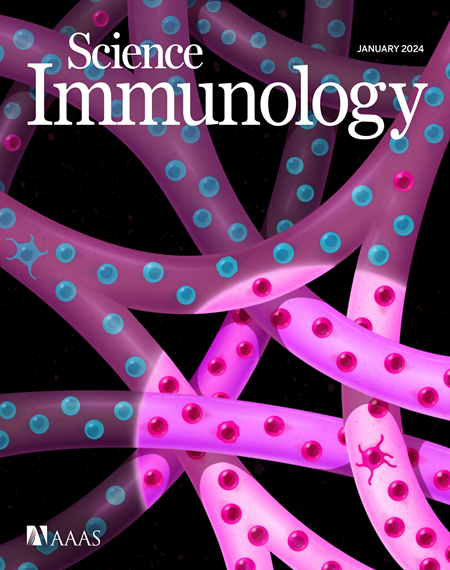Tissue origin and virus specificity shape human CD8+ T cell cytotoxicity
IF 16.3
1区 医学
Q1 IMMUNOLOGY
引用次数: 0
Abstract
CD8+ T cells are classically defined by cytotoxic activity, but it has remained unclear whether cytotoxic programs are compartmentalized across tissues and memory subsets. Here, we established a human organ donor cohort and found that expression of conventional cytotoxic molecules—granulysin, perforin, and granzyme B—was most prominent among circulating memory CD8+ T cells and decreased progressively with tissue residency, inversely mirroring the expression of CD69 and CD103. Other cytotoxic molecules, including granzymes A, H, K, and M, were variably expressed across tissues, and memory CD8+ T cells targeting persistent viruses expressed multiple granzymes coordinately. In an in vitro tonsil system, transforming growth factor–β induced discordant regulation of cytotoxic molecules and CD103. Combined with interleukin-15, this circuitry modulated proliferation and the acquisition of redirected killing activity via perforin and granzyme B. Our findings suggest that human memory CD8+ T cell cytotoxicity is intricately regulated by environmental cues reflecting tissue location and antigen specificity.
组织来源和病毒特异性决定了人CD8+ T细胞的细胞毒性
CD8+ T细胞通常被定义为细胞毒性活性,但细胞毒性程序是否在组织和记忆亚群中划分尚不清楚。在这里,我们建立了一个人类器官供体队列,发现传统的细胞毒性分子——颗粒素、穿孔素和颗粒酶b的表达在循环记忆CD8+ T细胞中最为突出,并随着组织的存在而逐渐降低,与CD69和CD103的表达相反。其他细胞毒性分子,包括颗粒酶A、H、K和M,在组织中表达变化,靶向持续性病毒的记忆性CD8+ T细胞协调表达多种颗粒酶。在体外扁桃体系统中,转化生长因子-β诱导细胞毒性分子和CD103的不协调调节。与白细胞介素-15结合,该回路调节增殖并通过穿孔素和颗粒酶b获得重定向杀伤活性。我们的研究结果表明,人类记忆CD8+ T细胞的细胞毒性受到反映组织位置和抗原特异性的环境线索的复杂调节。
本文章由计算机程序翻译,如有差异,请以英文原文为准。
求助全文
约1分钟内获得全文
求助全文
来源期刊

Science Immunology
Immunology and Microbiology-Immunology
CiteScore
32.90
自引率
2.00%
发文量
183
期刊介绍:
Science Immunology is a peer-reviewed journal that publishes original research articles in the field of immunology. The journal encourages the submission of research findings from all areas of immunology, including studies on innate and adaptive immunity, immune cell development and differentiation, immunogenomics, systems immunology, structural immunology, antigen presentation, immunometabolism, and mucosal immunology. Additionally, the journal covers research on immune contributions to health and disease, such as host defense, inflammation, cancer immunology, autoimmunity, allergy, transplantation, and immunodeficiency. Science Immunology maintains the same high-quality standard as other journals in the Science family and aims to facilitate understanding of the immune system by showcasing innovative advances in immunology research from all organisms and model systems, including humans.
 求助内容:
求助内容: 应助结果提醒方式:
应助结果提醒方式:


